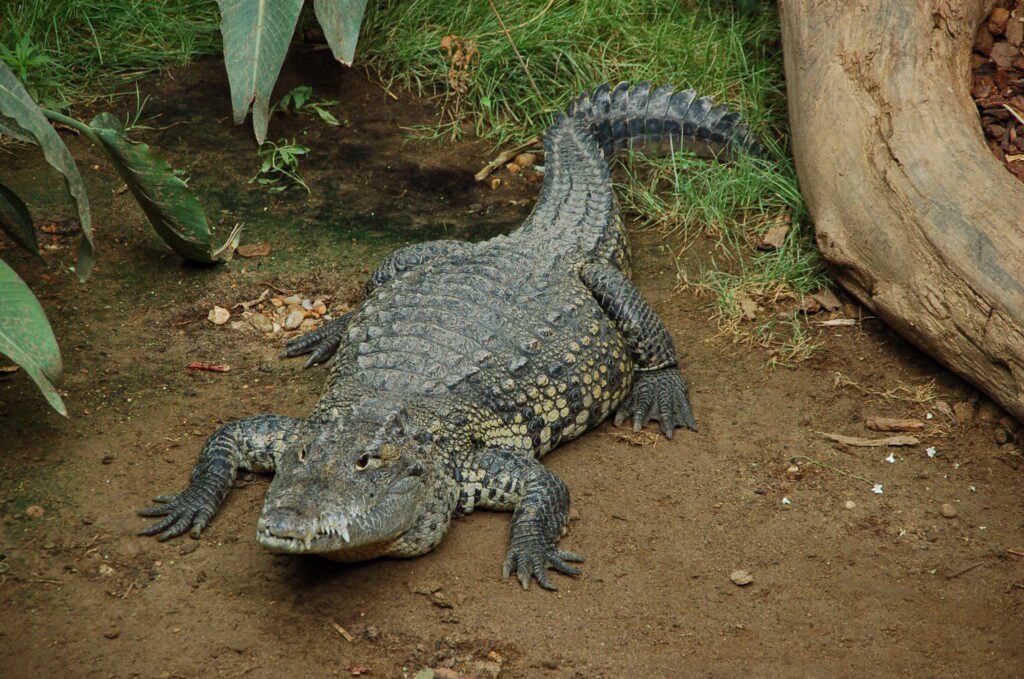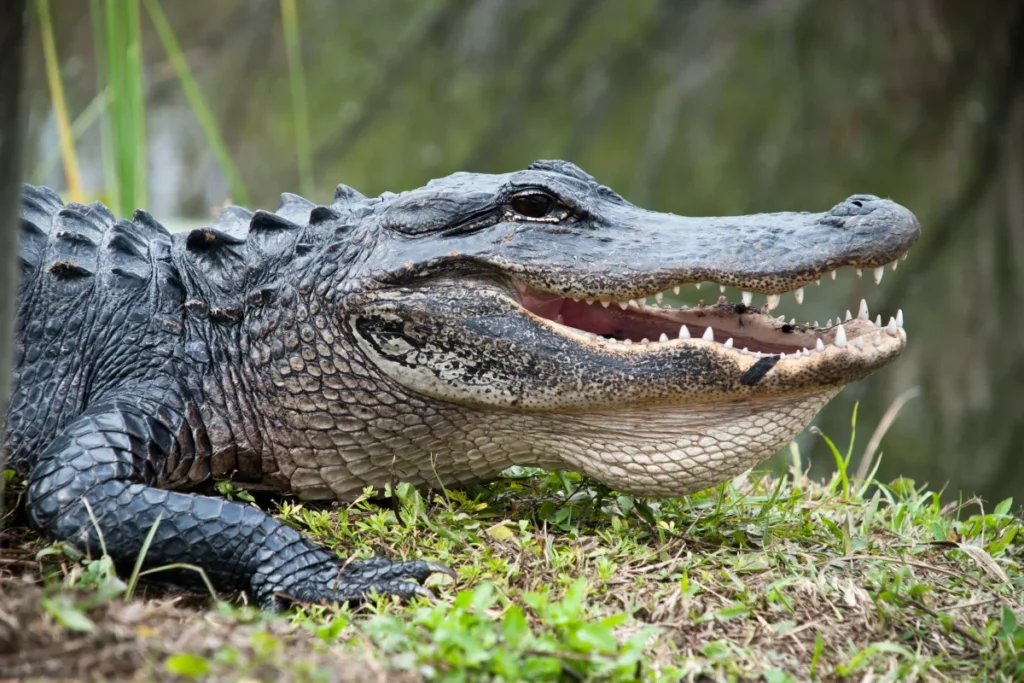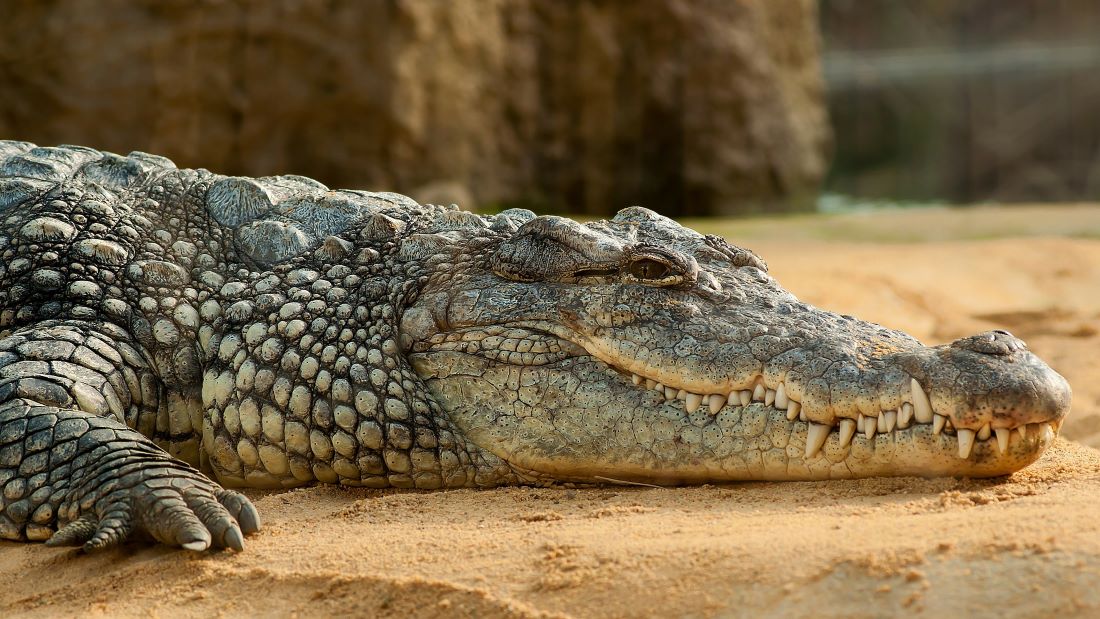Are There Alligators in Mexico? A Comprehensive Look
Have you ever wondered if there are alligators lurking in the beautiful waters of Mexico? Well, grab your sombrero and get ready for a wild ride because we’re about to dive into the fascinating world of crocodilians south of the border!
Understanding Crocodilians in Mexico
When you think about crocodilians, chances are the image that springs to mind is that of the American Alligator, a creature often symbolized as a fearsome predator. However, if you’re picturing these creatures swimming in the waters of Mexico, you’re likely in for a surprise. Contrary to what many believe, the American Alligator isn’t native to this region. Instead, the Mexican landscape is graced by a different, yet equally fascinating selection of crocodilian species – specifically, the American Crocodile and Morelet’s Crocodile.
This misconception about the presence of alligators in Mexico is a common one, possibly due to their iconic status, and it’s time we debunked this myth. So, let’s embark on an enlightening journey into the intriguing world of crocodilians that call Mexico their home.
| Crocodilian Species | Scientific Name |
|---|---|
| American Crocodile | Crocodylus acutus |
| Morelet’s Crocodile | Crocodylus moreletii |
These two species, although lesser-known than their alligator cousin, are nonetheless remarkable creatures. They’ve adapted to thrive in the diverse Mexican environment, from marshes to rivers, and exhibit unique traits and behaviors that set them apart from other crocodilian species, a topic we’ll delve into in the sections ahead. So, even though you won’t encounter any alligators in Mexico, you will find yourself mesmerized by its native crocodilians.
So, are there alligators in Mexico? The quick answer is a resounding “no.” But don’t let that dampen your enthusiasm. There’s still a wealth of knowledge to uncover about the genuine crocodilians of Mexico. Stay tuned as we continue to explore this fascinating subject in the upcoming sections.
Crocodilians: More than Just Alligators
Embarking on our journey into the world of crocodilians, we must first understand that this fascinating group of reptiles is not limited to the fearsome alligators that we often picture. Rather, the crocodilian family is a diverse group, painting a rich and complex tapestry of species that include alligators, crocodiles, caimans, and gharials. These creatures, each with their unique traits and habitats, have claimed their territories across the globe, predominantly in the warmer tropical and subtropical regions.
When we envision alligators, images of dark, serene freshwater habitats like rivers, lakes, and swamps often spring to mind. It’s a common misconception that these majestic creatures, with their powerful jaws and armored bodies, roam the waters of Mexico. In reality, alligators are primarily found in the southeastern United States, far from Mexico’s warm, sunny coasts. This distinction is pivotal to our understanding of the crocodilian species that actually call Mexico their home.
Read also: What Eats an Alligator? Discover the Top 12 Predators That Prey on These Mighty Reptiles
The fascinating history of crocodilians can be traced back to the Late Triassic period, a staggering 230 million years ago. These ancient reptiles, while bearing only a hint of resemblance to their modern-day descendants, have stood the test of time, evolving and adapting to their environment over millions of years. Today, their distribution varies greatly, with some species favoring the freshwater habitats similar to their alligator cousins, while others, like the crocodiles, have a wider geographical spread, touching parts of Africa, Asia, the Americas, and Australia.
As we delve deeper into this captivating topic in the forthcoming sections, we’ll explore the rich diversity of crocodilian species that inhabit Mexico – a land far removed from the typical alligator terrain. This journey will not only quench your curiosity but also imbue you with a newfound respect for these remarkable survivors of a bygone era.
The Real Crocodilians of Mexico: More Than Just a Myth
While alligators may be missing from Mexico’s diverse fauna, the country is far from devoid of impressive crocodilians. In fact, Mexico’s vibrant ecosystems serve as a home to two fascinating species that are often mistaken for alligators due to their formidable size and similar physical traits – the American Crocodile and Morelet’s Crocodile.
The American Crocodile (Crocodylus acutus)
When you imagine a crocodile, the American Crocodile is probably what comes to mind. This formidable creature is a common sight along the Pacific coast and southern region of Mexico.
With a potential to grow up to 5 meters (approximately 16 feet), these crocodiles command respect. They are equipped with V-shaped snouts, a trait that distinguishes them from their alligator cousins. But it’s not just their size that’s impressive. The American Crocodile is an opportunistic predator, demonstrating an astonishing adaptability in their diet. From fish to mammals, their wide palate allows them to thrive in diverse habitats.
Morelet’s Crocodile (Crocodylus moreletii)

morelets crocodile
Then we have the Morelet’s Crocodile – a smaller yet equally captivating species. Mostly found in the freshwater habitats of southeastern Mexico, these crocodiles prefer the calm waters of marshes and lakes.
Despite their smaller stature, typically growing only up to about 3 meters (nearly 10 feet), Morelet’s Crocodiles share the same predatory instincts as their larger counterparts. They are a testament to the fact that size doesn’t always determine the ferocity of a predator.
These two species reflect the rich diversity of crocodilians in Mexico, each with its own unique adaptations to the environments they call home. So, while you won’t find alligators in Mexico, you will discover a captivating world of crocodiles that’s ripe for exploration and study.
Unveiling the Geographical Distribution of Crocodilians in Mexico
Delving deep into the fascinating world of Mexico’s crocodilian inhabitants, it’s critical to comprehend the geographical distribution of these awe-inspiring creatures. Not only does this knowledge satisfy our natural curiosity, but it also plays an essential role in ensuring human safety in areas where these predators are prevalent.
Let’s take a virtual journey through Mexico, exploring the distinct habitats of the American Crocodile and Morelet’s Crocodile, and understand why they favor these specific regions.
The Pacific Habitats of the American Crocodile

american crocodile
The American Crocodile, an imposing presence with a length of up to 5 meters, finds its home along the Pacific coastlines of Mexico. Picture the serene landscapes of states like Jalisco, Nayarit, and Sinaloa. These areas, with their brackish and saltwater habitats, are a paradise for these crocodiles. The coastal lagoons and estuaries in these states provide the perfect blend of salt and fresh water, making them the preferred hunting grounds for these opportunistic predators.
The Freshwater Enclaves of Morelet’s Crocodile
Now, picture the dense marshes, tranquil lakes, and meandering rivers of southeastern Mexico. This is where you’ll find Morelet’s Crocodile, a smaller but equally fierce predator, growing up to 3 meters. States like Campeche, Quintana Roo, and Yucatán are the hotspots for these crocodiles. Unlike their American counterparts, Morelet’s Crocodiles have an affinity for freshwater habitats, which are abundant in these regions.
However, one needs to remember that despite these defined habitats, both species are highly adaptable and known for their survival instincts. Don’t be surprised if you encounter these crocodiles in unexpected places, especially during their quest for food or in their breeding season.
So, next time you visit Mexico, remember to appreciate not just the country’s rich historical and cultural heritage, but also its thriving biodiversity, especially its resident crocodilians. Stay informed and stay safe.
Mexico’s Crocodilian Fauna in Context: A Tale of Two Species and Their Neighbors
Imagine Mexico as the central character in a story that revolves around the world of crocodilians. A story of resilience and adaptability, where our protagonist shares its land and water with two primary species—the American Crocodile and the Morelet’s Crocodile. But, as we have often noticed in our worldly encounters, the context can shape an entity’s story. And so does it shape Mexico’s crocodilian narrative when compared with its neighboring regions.
Take a moment to visualize the geographical proximity of Mexico with the southern United States and Central America. Picture the similarities and distinctions that exist within their respective crocodilian fauna. The common thread? The presence of the American Crocodile. Mexico and the southern United States, despite their geographical distinctions, both play host to this remarkable species.
However, the plot thickens when we realize that the United States has something that Mexico does not—an alligator species. Yes, you heard it right. The American Alligator is indigenous to the United States, not Mexico, adding an interesting twist to our tale.
Now, let’s shift our gaze southward to Central America, where countries like Belize and Guatemala are part of this narrative. Here, we find another shared inhabitant with Mexico—the Morelet’s Crocodile. But, notice the absence of the American Crocodile from these regions. It seems our protagonist, Mexico, is the only character in this tale that shares its habitat with both these crocodile species.
One might wonder, what factors drive this unique distribution of crocodilians across regions? It’s a tale of climate, habitat preferences, and human activities. Each region presents a unique blend of these factors, shaping the geographical distribution of these magnificent creatures and giving us an intriguing story to tell.
Check out: What Eats Frogs? Unveiling the Hidden World of 16 Frog Predators
As we continue our journey through the world of crocodilians in Mexico, let’s bear in mind this broader context. It not only adds depth to our understanding but also emphasizes the importance of preserving these unique ecosystems for the continued survival of these incredible creatures.
Navigating the Realm of Crocodiles in Mexico: A Safety Guide
Living in harmony with nature is a delicate balance, especially when that nature includes the powerful and awe-inspiring crocodilians. Whether you’re a resident of Mexico, planning a vacation, or an adventurous soul seeking to experience the vibrant wildlife, it’s crucial to be aware of the possible presence of these formidable creatures in certain parts of the country. But fear not, with knowledge comes empowerment. Here are some essential safety tips to minimize the risk and ensure a safe co-existence with these ancient reptiles:
The Nocturnal Predators: Be Wary of the Night
Crocodilians are nocturnal beings, their activity peaking under the cover of darkness. Their eyes are designed to see in low light, giving them a significant advantage in the dark. Hence, avoid swimming or wandering near water bodies at night. If you must, ensure you’re in a well-lit area and always accompanied.
Respect their Space: Keep Your Distance
One of the golden rules when dealing with any wildlife is respecting their personal space. For crocodilians, this means maintaining a safe distance of at least 10 meters (approximately 33 feet). These creatures are incredibly agile and can move with surprising speed, making it vital to keep a safe gap.
Don’t Feed the Beasts: The Perils of Encouragement
Feeding crocodilians may seem like a thrilling adventure to some, but it’s a dangerous practice that should be strictly avoided. It not only makes them less fearful of humans but also encourages them to associate humans with food. This association can lead to unforeseen incidents and pose a threat to both the animal and humans.
Watch your Step: Be Extra Cautious Near Water
Always exercise extra caution near water bodies where crocodilians are commonly found. These creatures are masters at camouflage and can stay submerged for a long time, making them hard to spot. So, whether you’re having a picnic by the river or hiking near a swamp, stay vigilant.
Knowledge is Power: Educate Yourself
Before setting foot in any area known for its crocodilian population, make sure to educate yourself and your companions about the native wildlife and any associated risks. Understanding their behavior, knowing what signs to look for, and learning about their habitats can go a long way in ensuring your safety.
Remember, co-existing with wildlife is about understanding and respect. By following these safety guidelines, you can contribute to the preservation of these magnificent creatures, all while ensuring your safety and enriching your experience in the beautiful landscapes of Mexico.
Conclusion
In the heart of the Yucatán Peninsula, where the turquoise waters meet the lush tropical foliage, a common question arises – are there alligators in Mexico? The answer, interestingly, is no. There are no native alligator species that call Mexico, let alone the Yucatán Peninsula, home. However, that is not to say that Mexico is devoid of the intriguing world of crocodilians. Far from it, actually.
Indeed, Mexico is a vibrant tapestry of biodiversity, especially when it comes to crocodilian species such as the American Crocodile and the Morelet’s Crocodile. These creatures, with their V-shaped snouts and a preference for saltier habitats, paint a distinct picture from their alligator counterparts. Herein lies the importance of differentiating between crocodiles and alligators, which can be done by observing the shape of their snouts, skin color, and habitat preferences. This knowledge is essential not just for our understanding but also for their conservation.
As we tread into territories shared with these majestic creatures, it becomes imperative to stay informed about their habitats and abide by local safety guidelines. This is about more than just safeguarding human lives. It’s about coexistence. It’s about playing our part in protecting these creatures that have existed since the time of the dinosaurs, preserving their habitats, and ensuring the continuity of the intricate web of life.
So, the next time you find yourself in the Yucatán Peninsula, remember, there may not be alligators lurking in the waters, but there are crocodiles. Magnificent, elusive, and a testament to nature’s diverse creativity. Treat them with respect, keep a safe distance, and marvel at their existence – a tale of survival, adaptation, and cohabitation.
Yes, there are alligators in Mexico. Mexico is home to a rich diversity of crocodilian species, including the American Crocodile and Morelet’s Crocodile.
Alligators are generally associated with freshwater habitats like rivers, lakes, and swamps. In Mexico, American Crocodiles are commonly found along the Pacific coast and southern region, while Morelet’s Crocodiles are predominantly found in freshwater habitats in the southeastern parts of the country.
Alligators and crocodiles in Mexico have distinct differences in terms of physical characteristics and behavior. Some key differences include the shape of the snout, skin color, and habitat preferences.
To stay safe around crocodiles in Mexico, it is important to be aware of their potential presence in certain parts of the country and follow safety guidelines. Some general safety tips include avoiding swimming at night, maintaining a safe distance of at least 10 meters (about 33 feet) from any crocodilian, avoiding feeding them, and being cautious near water bodies where crocodilians are commonly found.

